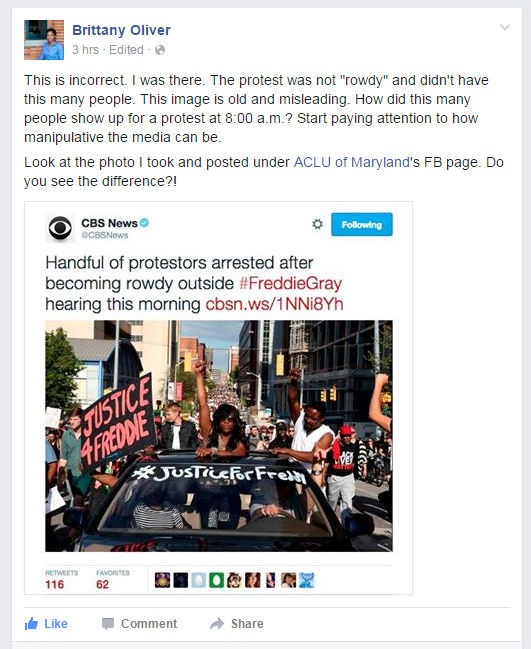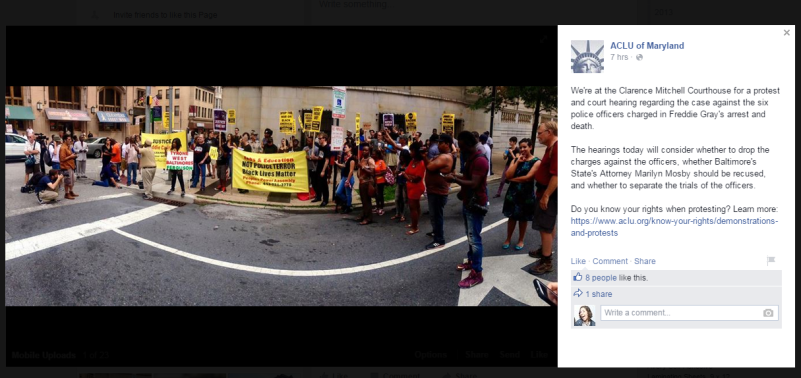What You Need to Know About Media Literacy
Get ready for Critical Social Justice: Baltimore 365 with our “What You Need to Know” series.
In light of the Baltimore Uprisings this past spring, media literacy–the ability to find and analyze media–is now all the more important. For example, when the Baltimore Sun places a photo of a police car being vandalized on their front page, as opposed to a photo showing two rival gangs joining together to peacefully protest police brutality in their city, they are sending the message that all protesters are violent.
What narrative does the Baltimore Sun, CNN, or Fox News create about Baltimore? What story are we receiving from these sources? What is missing from these narratives? And why do large media platforms tell a different story than the one residents and activists of Baltimore tell through their tweets and recordings of police in their city? Media literacy requires us to answer these questions and think critically about the messages we receive, where we receive them from, and what they might be missing.
- Media literacy is the ability to find, analyze, and create media.
- Twitter in many ways increases media literacy because it allows real people to both create and access various kinds of media outlets quickly and easily.
- Facebook Groups are a way to enhance engagement with particular social justice issues. The forum that Facebook provides allows communication among community members that can shape how they understand the media they receive. Through engaging with specific issues and starting dialogues with one another, Facebook users can better see what is left out of mainstream news sources’ accounts of a story, and can detect when a news story is slanted or biased. They can use the skills they gain in these groups each time they encounter media messages.
- New media is digital, interactive, easier to access, and evolving at a rapid pace.
- Instagram allows you to visually track events, protests, and news in real-time through the use of hashtags and following specific users. It also eliminates the hierarchy of who can produce and access news.
- Hashtags are a method of new media, used to track and organize specific information. Here are some examples:
- #FreddieGray – created both to honor Freddie Gray who was murdered by Baltimore police, and to organize protests around the city. This hashtag allows people to keep up and engage with news about Freddie Gray.
- #SayHerName – created to honor black women who have been murdered and to bring attention to how black women experience policing, profiling, and violence.
- #BaltimoreUprising – This hashtag was created to illustrate and organize the community activism taking place in Baltimore city. From organizing marches to getting groups together to clean up the city, this hashtag makes it easy to find information as well as get involved with the activism taking place in Baltimore.
- #BlackLivesMatter – created by Alicia Garza, Patrisse Cullors, and Opal Tometi, this hashtag has sparked a nationwide movement to anti-Black racism that permeates our society.
For more about media literacy as it relates to the Baltimore Uprisings, check out these articles:
News Media Struggle to Present a Balanced Picture of Baltimore Unrest
What’s Being Said in the Media vs. What’s Really Happening in Baltimore
Learn more about media as it relates to Baltimore at the Vines, Rhymes, and Headlines: Telling the Story of Baltimore event, happening October 22nd at Commons Main Street as part of the Critical Social Justice Initiative.
Posted: October 19, 2015, 11:08 AM

